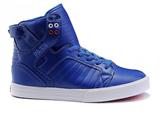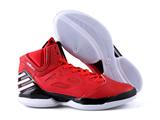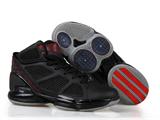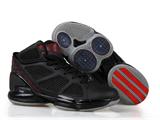Paradise Suzhou - Embroidered Shoes
Paradise Suzhou - Embroidered Shoes Release Date: November 29, 2010
Embroidered shoes have existed since ancient times and are known to all. However, the red cloth-wrapped, thousand-layered, boat-shaped embroidered shoes from the water towns in the eastern part of Suzhou may be less familiar to many. In the water towns, with their crisscrossing rivers and canals, boats often replace walking as the mode of transportation. The boat is the only means of transportation in these areas. Therefore, the embroidered shoes worn by local women are made in a boat shape, symbolizing "smooth roads" and "a successful journey."
The soles of these boat-shaped embroidered shoes are called "two-part soles," with a thin triangular shoe tip attached to the front half of the sole, made from tightly woven fine cloth. This shoe tip curls upward, making walking light and agile, hence the name "toe-lifting" shoes. The soles of the sneakers popular in the 1980s resemble those of "toe-lifting" shoes, which raises the question: Is this a coincidence, or did the designers get inspiration from "toe-lifting" shoes?
Making a pair of embroidered shoes requires considerable effort. Rural women in the water towns usually start making shoes during the winter off-season and at the beginning of the New Year. They like to sit together on the sunny side of a wall, basking in the sun while embroidering and making shoes. Their needlework baskets contain colorful silk threads used for embroidery, and the shoe uppers feature various floral, animal, and crop patterns. The flowers on the two sides of the shoe uppers are symmetrical. Once embroidered, they are stitched together with silk thread, commonly known as "locking the beam." After the shoes are completed, a U-shaped heel tab is sewn onto the back of the shoe.
The patterns on a pair of embroidered shoes are very particular and carry specific meanings. Young girls' shoes feature the "Little Plum Makeup" pattern, composed of lotus, jasmine, plum blossoms, and other flowers. The plum refers to the Wu dialect's homophone for "younger sister," as girls in the Wu region are generally called little sisters, symbolizing blessings for the younger sister's growth. During weddings, brides wear "steaming-treading shoes," "ceremonial shoes," and "blessings and longevity" shoes featuring patterns of bats, peach fruits, water chestnuts, plum blossoms, and more, wishing the newlyweds "double blessings and longevity" and "mutual respect between husband and wife." There is also the "Yutang Wealth" shoe, featuring patterns of magnolia, crabapple, lotus, osmanthus, and others. From the name of this shoe, one can see that it carries auspicious wishes for the newlywed couple. After marriage, women wear flowered shoes featuring patterns of "phoenix through peony" and "plum, orchid, bamboo, and chrysanthemum," symbolizing wealth, purity, and fidelity. Middle-aged women's flowered shoes mainly feature "three plums" and "blue peony," which are relatively elegant and refined. Elderly women's flowered shoes mainly feature "lotus and hibiscus" and "mountain climbing for longevity." The "mountain climbing for longevity" pattern includes lotus flowers, mountains, bamboo, bamboo shoots, peach fruits, and evergreen plants. These shoes are worn by elderly women when they go to temples for incense offerings. For women over 60 years old, their flowered shoes mainly feature patterns such as "yearly increasing blessings and longevity," "next life satisfaction," "longevity mountain and sea of blessings," and "eight immortals crossing the sea." The "yearly increasing blessings and longevity" features patterns of lotus flowers, peach fruits, bats, hazelnuts, and evergreen plants; the "next life satisfaction" features patterns of orchids, evergreen plants, dragonflies, etc.; the "longevity mountain and sea of blessings" features patterns of lotus flowers, peach fruits, bats, crabapples, and camellias, symbolizing "longevity like the southern mountains and blessings like the eastern seas."
The embroidered shoes of rural water towns have a long history, distinctive shoe shapes, bright colors, delicate stitching, and primitive patterns with symbolic meanings. Besides their practical value, they are also folk crafts of the Jiangnan water towns and have always been favored by rural women. Now, with the development of the times, updated concepts, and improved living standards, embroidered shoes are rarely seen. Looking back, embroidered shoes have long reflected the wisdom and artistic talent of women in the historical river. This talent and wisdom still shine brightly today in many Suzhou embroiderers!




